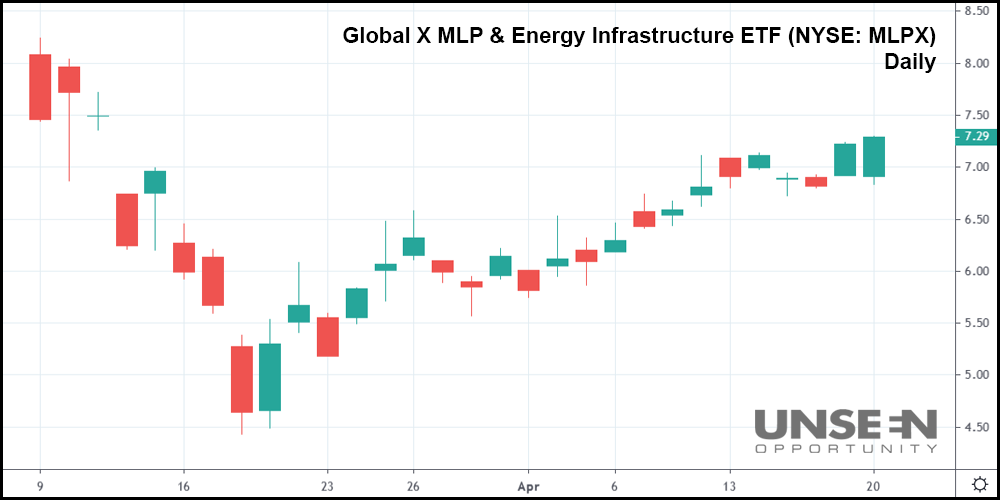The unimaginable has happened:
Crude oil prices fell another 40% this morning, as a number of factors conspired to drive them down.
Thought the bottom was in? So did plenty of other oil speculators, along with nearly every analyst spanning the globe. OPEC said that its member nations (and allies) would cut 9.7 million barrels of oil per day starting on May 1st.
That wasn’t enough, apparently, to save crude from plunging to a 30-year low.
A demand slump in response to the COVID-19 pandemic is to blame for the drop, coupled with fears that the world is running out of places to store oil.
Producers are still putting out barrels that nobody needs. The surplus has grown exponentially as a result.
Limiting the damage, however, is the nearest oil futures contract (which expires on Tuesday). It “detached” dramatically from contracts further out, suggesting that futures traders anticipate a recovery. West Texas Intermediate (WTI) crude for May delivery sunk over 40% ($7.80) to a paltry $10.47.
Brent crude, which has done comparatively better than WTI crude over the last few weeks, also cratered 6% today.
And despite the continued oil crash, American stocks have managed to hang on. The major indexes opened the day lower but rose by noon. The Dow and S&P are now trading at losses of 0.90% and 0.40%, respectively. The Nasdaq Composite is actually up 0.46% as tech stocks look to stretch out a few more positive sessions.
If oil can recover, so too will scores of energy firms, providing an extra lift to the market.
Helima Croft, global head of commodities strategy at RBC Capital, feels as though a crude recovery might take some time to materialize, though.
“There is still a lot of crude on the water right now that is going to refineries that do not need it,” Croft said this morning in a CNBC interview.
“Right now we don’t see any near-term relief for this oil market […] we remain really concerned for the outlook on oil near-term.”
And if those “near-term” prospects don’t improve any time soon, one sector stands to benefit greatly.

Midstream oil & gas companies – the companies responsible for storing, processing, and transporting petroleum products – are going to see a massive spike in demand, possibly larger than ever before. The oil producers need to make a living, too. They won’t stop producing barrels.
Even the planned 10% daily reduction (starting May 1st) will be a tough pill to swallow for OPEC+. A 20% cut is unlikely, meaning there simply won’t be enough oil & gas storage available.
And that’s precisely where the midstream firms come in. Over the next few weeks, don’t be surprised to see these companies adjust to meet demand, upping storage, transportation, and processing capabilities to the nth degree.
The Global X MLP & Energy Infrastructure ETF (NYSE: MLPX), which is comprised of oil & gas midstream corporations, is rising in response to the glut of oil flooding the market. It just broke through key resistance this morning.
Odds are that if the demand for oil remains low, the MLPX (and the stocks contained within) should flourish.
Yes, the COVID-19 outbreak seems to be slowing down finally in the United States. But it could still be a while before the economy fully re-opens. Even a partial re-opening might not be enough to prop up oil.
That means midstream companies should quickly become the hot stocks of the energy sector, instead of the “usual suspects;” oil & gas integrated firms like Chevron (NYSE: CVX) and Exxon Mobil (NYSE: XOM).








